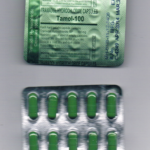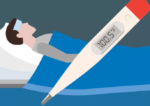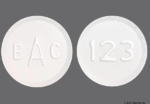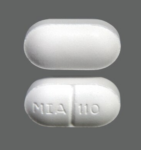Paracetamol is known as acetaminophen in the USA. Acetaminophen relieves mild-to-moderate pain, headache and fever. It is available as brand names such as Tylenol, Mapap or Panadol, and also as generics and store-specific brands.
There are no differences in the chemical structure or therapeutics uses of acetaminophen and paracetamol, although recommended doses and available strengths may vary slightly between countries.
Acetaminophen comes in many over-the-counter (OTC) forms in the U.S., including regular (325 mg) and extra-strength (500 mg) oral tablets or capsules, rapid-release, oral liquids, chewable or orally-disintegrating tablets, and rectal suppositories. A prescription intravenous (IV) form of acetaminophen (Ofirmev) is also available in the U.S.
Paracetamol is a common name used for acetaminophen throughout many areas of the world, including European countries, Australia, India, and New Zealand.
Yes, paracetamol and Tylenol refer to the same medication. Paracetamol is the generic name for the drug, while Tylenol is a brand name, primarily used in North America. In other parts of the world, the medication is often referred to by its generic name, paracetamol. In the United States and Canada, it is commonly called acetaminophen.
Both paracetamol and Tylenol are used to relieve pain (analgesic) and reduce fever (antipyretic). They are commonly used to treat headaches, muscle pain, arthritis, backaches, toothaches, colds, and fevers.
Key Points:
- Generic name: Paracetamol (or acetaminophen in the U.S.)
- Brand name: Tylenol (there are also other brands)
- Uses: Pain relief and fever reduction
- Common Dosage: Typically, 500 mg to 1000 mg every 4-6 hours, but always follow medical advice or package instructions.
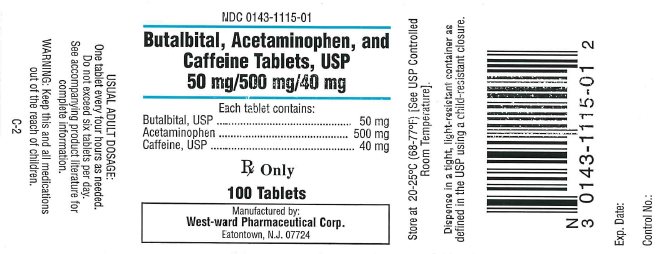
Which Products in the U.S. Contain Acetaminophen?
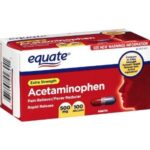
Acetaminophen is found in over 600 prescription and OTC products in the U.S. Acetaminophen is found alone and in combination with other products like antihistamines, decongestants, cough suppressants, and diphenhydramine.
Common over-the-counter (OTC) combination products found in the US that contain acetaminophen include:
- Delsym NightTime Multi-Symptom (acetaminophen, dextromethorphan, doxylamine, phenylephrine) – for cough, runny nose, congestions, headache, cold and flu symptom relief
- Excedrin (acetaminophen, aspirin, and caffeine) – for migraine headache pain relief
- Robitussin Flu (acetaminophen, chlorpheniramine, dextromethorphan, and pseudoephedrine) – for headache, runny nose, cough, congestion and flu symptom relief
- Sudafed PE Sinus Headache (acetaminophen and phenylephrine) – for sinus headache symptom relief
- Theraflu Sinus and Cold (acetaminophen, pheniramine, and phenylephrine) – for sinus headache, congestion, cold, flu symptom relief
- Tylenol PM (acetaminophen and diphenhydramine) – for mild pain relief combined with an antihistamine OTC sleep aid
Many prescription pain opioid (narcotic) medicines also contain acetaminophen and are classified as controlled substances in the U.S.
Common prescription opioid combination products that contain acetaminophen include:
- Tylenol with Codeine #3 (acetaminophen and codeine)
- Hycet, Lortab, Norco (acetaminophen and hydrocodone)
- Roxicet, Percocet (acetaminophen and oxycodone)
- Ultracet (acetaminophen and and tramadol)
- Fioricet with codeine (acetaminophen, butalbital, caffeine, and codeine)
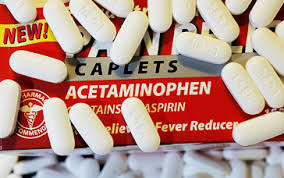
Is Acetaminophen Popular in the U.S?
In the U.S, acetaminophen is one of the most commonly used over-the-counter (OTC) pain relievers available without a prescription. Ibuprofen (Advil, Motrin) and naproxen (Aleve), both in the NSAID class of drugs, are other popular OTC medications used for fever and pain. NSAIDs are also effective for inflammatory pain.
Aspirin, known commonly as the brand name Bayer Aspirin, is used for pain, fever and inflammation but is also commonly used in a low dose (81 mg) to protect the heart in patients who have had a heart attack or stroke.
Acetaminophen is commonly used to treat these types of pain, although NSAIDs may be preferred for backache, toothache, or menstrual cramps, when possible:
- headache
- fever
- toothache
- backache
- menstrual cramps
- muscle aches
- minor arthritis pain
Acetaminophen is less irritating to the stomach than other over-the-counter pain medications, such as NSAIDs like ibuprofen or naproxen. Acetaminophen can be toxic to the liver if you take more than the recommended dose. Be sure to not exceed the total daily maximum amount of acetaminophen (3,000 to 4,000 mg) per day in adults. If you are not sure if your medicine contains acetaminophen, ask a pharmacist.
Avoid excess alcohol consumption if you take acetaminophen to lower the risk of liver toxicity. If you drink more than three alcoholic beverages per day, talk to your doctor before taking acetaminophen.
Acetaminophen is also commonly found in combination with other OTC and prescription medications, both branded and generic, in the U.S. Store brands and generics can be more affordable. A bottle of 100 tablets of extra-strength (500 mg) acetaminophen in the U.S. typically costs around $2.00 to $5.00.
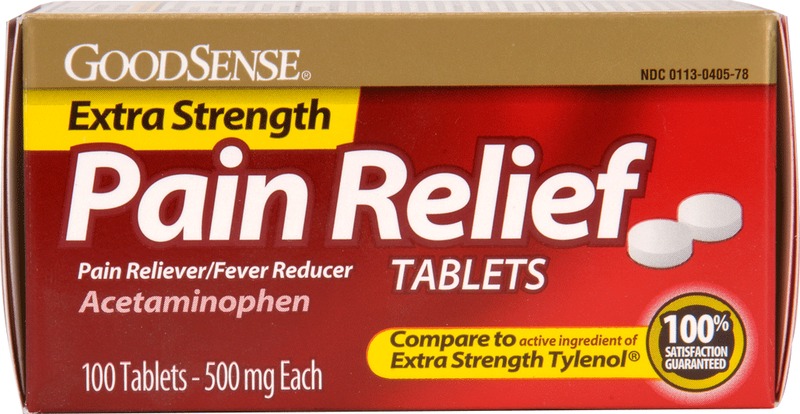
How Does Acetaminophen Work?
It’s not fully known exactly how acetaminophen works, but experts think it may block a specific type enzyme located mainly in the brain. It can help to reduce the sensation of pain and allows you to tolerate a higher level of pain.
Acetaminophen works differently than NSAIDs. NSAIDs reduce pain by blocking specific enzymes found in the body called prostaglandins. NSAIDs, like acetaminophen, work effectively in reducing fever and treating headaches, but also treat pain due to inflammation or swelling.
Advil Dual Action is an over-the-counter product that contains both acetaminophen and ibuprofen and became available in the U.S. in 2020. This product contains both ibuprofen and acetaminophen and allows you to take a lower maximum daily dose of each medication.
This is not all the information you need to know about acetaminophen for safe and effective use. Review the full acetaminophen information here, and discuss this drug and any questions you have with your doctor or other health care provider.
List of U.S. Brand Names for Acetaminophen
List of U.S. brand names for acetaminophen includes:
- Actamin
- Anacin AF
- Aurophen
- Bromo Seltzer
- Children’s Tylenol
- Infant’s Tylenol Suspension
- Leader 8 Hour Pain Reliever
- Mapap
- M-Pap
- Pharbetol
- Silapap Childrens
- Tactinal
- Tempra Quicklets
- Tycolene
- Tylenol
- Vitapap
The generic name acetaminophen may also be found on products in Canada or Japan.
List of international brand names for paracetamol:
- Panadol
- Calpol
- Disprol
- Hedex
- Medinol
- Tylenol
- Alvedon
Panadol may be found in countries such as Australia, Belgium, Chile, Egypt, Ireland, Korea, New Zealand, Peru, Qatar, Romania and Turkey.
Calpol may be found in countries such as the United Kingdom, Ireland, India, Cyprus, Hong Kong, Kenya, Malta, Philippines and Turkey.
In addition to the United States and Puerto Rico, the Tylenol brand name may be found in Brazil, Canada, China, Egypt, Japan, Lebanon, Mexico, Myanmar, Oman, Panama, Philippines, Portugal, Switzerland, Thailand, and Vietnam.
What are the possible side effects?
Acetaminophen / paracetamol are usually well-tolerated by most people. Many people are able to take this medicine without any side effects at all. But in some people, severe allergies, skin reactions or liver toxicity may occur. Side effects are similar for these two products because they are the same chemically.
Acetaminophen / paracetamol may be preferred for people at risk of stomach problems like bleeding or ulcers, instead of NSAID products like ibuprofen. Ask your doctor.
Severe liver damage or death may occur if:
- an adult that takes more than 4,000 mg of acetaminophen in 24 hours
- a child that takes more than 5 doses in 24 hours
- taken with other drugs containing acetaminophen (or paracetamol)
- if an adult has 3 or more alcoholic drinks every day while using this product.
Stop taking acetaminophen / paracetamol and call your healthcare provider right away if you have signs of liver problems, such as:
- stomach pain (upper right side)
- loss of appetite
- tiredness, itching
- dark urine, clay-colored stools
- jaundice (yellowing of the skin or eyes)
Severe skin reactions like redness or a rash that spreads and causes blistering and peeling (in rare cases) may occur. If a skin reaction occurs, stop use and seek medical help right away.
Common side effects may include:
- nausea
- vomiting
- constipation
- injection site pain and reaction (with the IV product)
Is Paracetamol Available in the United States?
Paracetamol (Panadol) and acetaminophen (Tylenol) are the same chemical product, so they are interchangeable, but specific dosing recommendations may differ by product or age. In the U.S., look for the generic name “acetaminophen” or brands such as “Tylenol” to find products equivalent to paracetamol. Acetaminophen is easily accessible without a prescription in pharmacies, grocery stores, and gas stations.
The acetaminophen product is the approved name in the U.S. Acetaminophen is easily accessible without a prescription in pharmacies, grocery stores, and gas stations.
Panadol (labeled as acetaminophen) may be found from online retailers in the U.S. However, beware of purchasing medications from unverified online pharmacies, as these supplements may contain unknown or toxic ingredients.
Some products may contain other ingredients beside acetaminophen (like cough or cold products), so be sure to check the labels and follow the dosing instructions exactly. Also, do not take more than one product that contains acetaminophen / paracetamol at the same time due to risk of overdose.
Pharmacists are widely available in the U.S., so if you have questions about an equivalent product to paracetamol, you can call the pharmacy.
Pain Medications, Pain Relief, and Pain Management


